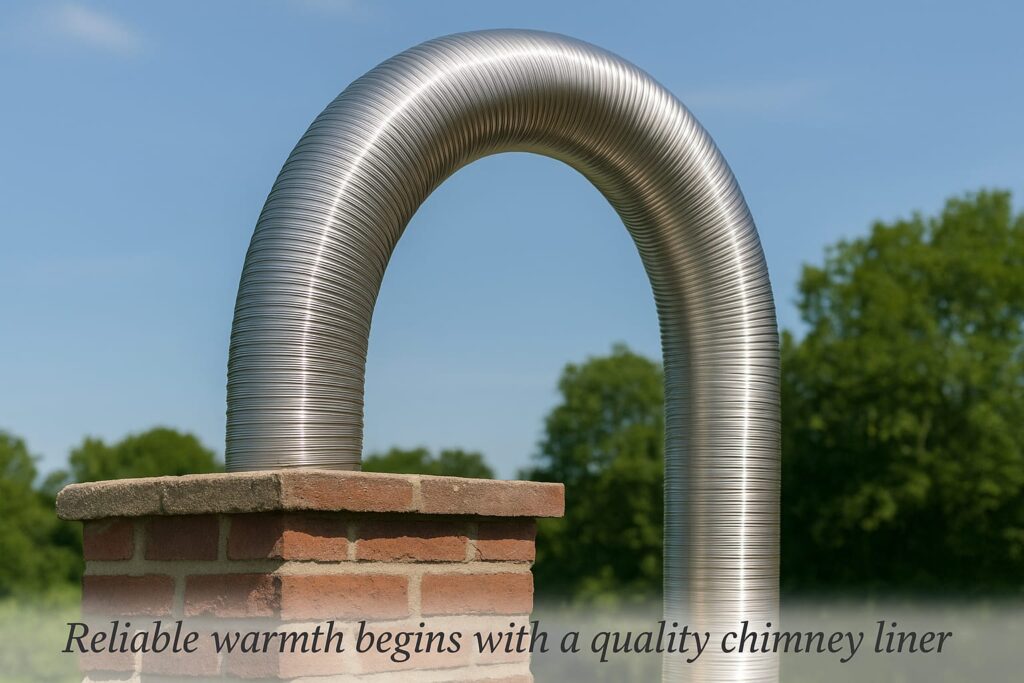
Living in Chambersburg means experiencing a full spectrum of weather—icy winters, rainy springs, and those hot, sticky summer days. If you own a fireplace or stove, keeping your chimney protected is a must, and that’s where the right Chimney Liner comes in. The liner inside your chimney acts like a shield, standing up to the wild moods of local weather while making sure everything in your home stays safe and running smoothly. But with so many types of chimney liners out there, how do you know which material is your best bet in our part of Pennsylvania? Let’s break it all down and help you pick a Chimney Liner that’ll go the distance.
Key Features: What Makes a Chimney Liner Stand Out in Chambersburg?
Not all chimney liners are created equal, especially when you factor in the quirky weather spells we get around here. If you’re picking out a liner for the first time, or thinking about replacing an old one, here are some features to look for:
- Weather Resistance: Chambersburg gets everything from freezing rain to heavy winds. A good liner should shrug off moisture, resist rust, and stay strong even after years of temperature swings.
- Durability: We’re talking about years—maybe decades—of service. Your liner should be tough enough to handle creosote, soot, and the occasional critter invasion.
- Easy Maintenance: Let’s be honest, nobody loves cleaning chimneys. Choose a liner that makes it simple to keep things tidy and safe.
- Compatibility: Whether you burn wood, gas, or pellets, your liner should be up for the job. Make sure it fits your appliance and fuel type.
The three most popular materials you’ll hear about are stainless steel, clay tile, and cast-in-place liners. Each has its own strengths when it comes to battling Chambersburg’s unpredictable seasons.
Safety: The Hidden Hero of Chimney Liner Choices
When it comes to fireplaces, safety isn’t just a buzzword—it’s the whole point. A top-notch chimney liner doesn’t just make your fireplace work better; it also keeps you protected. Chambersburg’s mix of cold snaps, storms, and humidity means your chimney faces more risks than you might think.
Here’s how different liner materials stack up in the safety department:
| Material | Weather Resistance | Fire Protection | Longevity | Maintenance |
|---|---|---|---|---|
| Stainless Steel | Excellent | High | 20+ years | Easy |
| Clay Tile | Good (can crack in freeze/thaw) | Moderate | 15–25 years | Challenging |
| Cast-in-Place | Very Good | High | 30+ years | Moderate |
Stainless steel chimney liners are especially popular in areas like Chambersburg. Why? Because they’re not fazed by moisture, resist rusting, and stay strong after freezing nights and hot summers. They’re also flexible, which helps them survive the freeze-thaw cycles that can split clay tiles. On the flip side, clay liners can crack if water gets in and freezes, so they’re trickier to maintain and might not last as long if your chimney isn’t perfectly watertight.
“A chimney liner is like an invisible shield—out of sight but absolutely essential for keeping your home safe, whatever the weather outside.”
If your home is older and still has a clay liner, it’s worth having it checked for cracks or gaps—especially after a wild winter storm.
Cost: Balancing Budget and Durability for Chimney Liner
Money talks, and chimney liners range from budget-friendly to big investment. Here’s a quick breakdown of what you might expect:
- Stainless Steel Liners: These cost a bit more upfront, but they’re often the best value in the long run. Since they’re so durable, you’ll likely avoid expensive repairs or replacements for years.
- Clay Tile Liners: These are usually the cheapest option if you’re building a new chimney. But if you’re fixing or updating an old one, replacing clay tiles can be labor-intensive and costly.
- Cast-in-Place Liners: These are a bigger investment, but they add strength to older chimneys and can last the life of your home.
Here’s a little tip: sometimes chimney repair companies in Chambersburg offer free inspections or seasonal discounts. If you’re on the fence about replacing your liner, shop around and ask about local deals.
Emergency Service: How Chimney Liner Material Impacts Quick Fixes
Nobody plans for chimney emergencies, but if smoke backs up into your living room or you spot cracks after a storm, fast fixes matter. The material you choose for your chimney liner can make a huge difference in how quickly things get sorted.
- Stainless Steel: Often the fastest to install or repair, especially if you need help after hours or in winter. Many local pros keep these liners in stock for emergencies.
- Clay Tile: Repairs can be slow and messy, since replacing tiles may mean tearing into brickwork.
- Cast-in-Place: Emergency fixes take longer, but these liners rarely fail suddenly.
If you want peace of mind, ask your local chimney experts about their emergency service options and response times for your chosen liner.
Conclusion: Picking the Perfect Chimney Liner for Chambersburg Weather
At the end of the day, the best Chimney Liner for Chambersburg is the one that matches your home, your fuel, and your peace of mind. Stainless steel liners tend to win out for their weather resistance, safety, and easy maintenance—making them a smart pick for local homes. Clay tiles are classic, but might struggle with the freeze-thaw cycles we see every year. Cast-in-place liners are long-lasting and solid, but cost more upfront.
No matter which material you choose, don’t skip regular checkups. A well-chosen and well-maintained chimney liner is your home’s unsung hero, quietly working through every season. Stay warm, stay safe, and enjoy your fireplace—no matter what the Chambersburg weather brings.
Read More: Chimney Sweep



